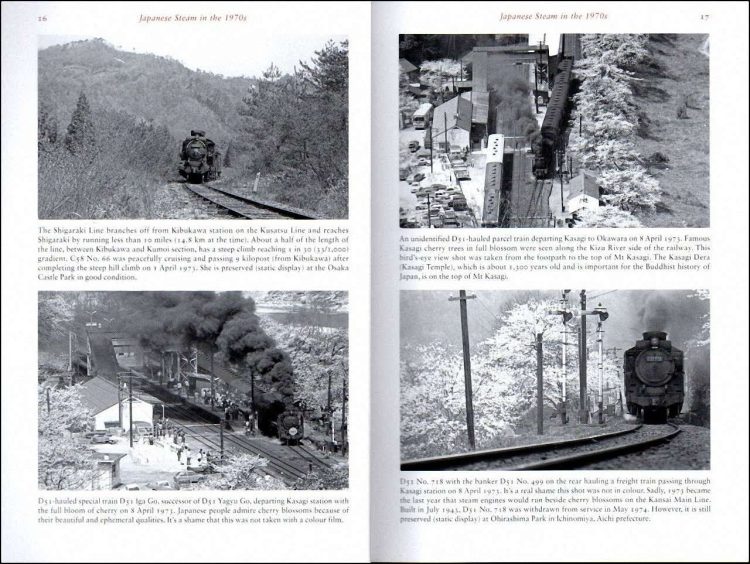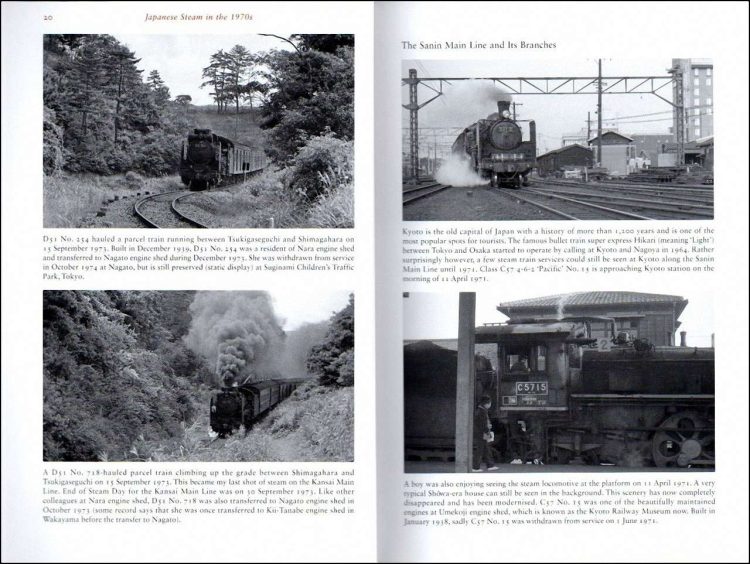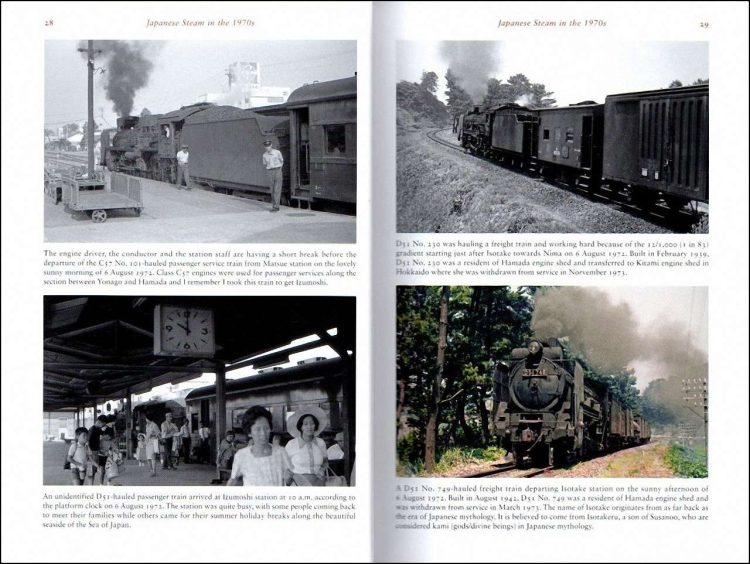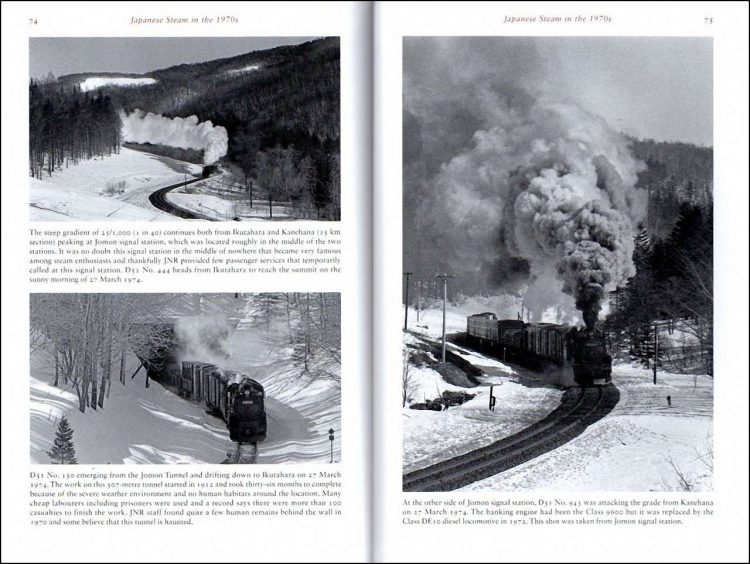Published by Amberley Publishing in July 2022 and written by Yoshi Hashida , this softcover book comes in the usual Amberley format of around 234 mm x 165 mm with 96 pages.
The publisher’s details state that there are 180 photographs, but there are only 160, with most being in black-and-white and just 15 in colour. It has a published price of £15.99, but can be obtained online from Amberley Publishing for £14.39 or from Amazon for £12.58.
Most British railway enthusiasts will associate Japanese railways with their famous bullet trains, which were launched in 1964, but many steam engines were still operational into the 1970s. With this in mind, Yoshi Hashida set out to capture Japan‘s remaining steam engines working in a variety of settings.
This book shows steam trains at work between 1971 and 1975, mainly in Western Japan and on Hokkaido in the far north. Most photos show locomotives in good condition and hard at work in a variety of settings, from coastal plains to snow-covered mountains, from engine sheds to stations, and on passenger and freight.
The book nominally has four sections, but other than an innocuous title at the start of each section there is nothing on subsequent pages to identify which section you are looking at as each page just has the book’s title as its heading.
Over half the locomotives pictured are of Japanese Railways Class D51, with most of the others being of Classes C11, C12, C55, C57, C58, C59 and 9600. However, other than one of the captions stating that Class D51 is a Mikado, or 2-8-2 to British eyes, there is no information as to the wheel arrangements of the other classes.
The captions provide plenty of information about the trains and their locations, but many of the photographs seem to be rather flat, and could have benefitted from a little editing to improve their contrast.
Most readers of this book will be totally unfamiliar with the geography of Japan. The captions identify where the photos were taken, but without a map there is no way of knowing whether they were taken in a small part of the country or country-wide. At the very least, the value of the book would be increased by including a map showing an outline of Japan and the locations of the lines covered.
The photo at top-left below is typical of steam engine sheds everywhere in their heyday, with a smoky haze hanging over everything. The other photos below are an enthusiast’s delight, with engines hard at work being banked up a 1-in-40 incline, and their exhaust accentuated by the cold conditions.

Japan is rightly famous for its spring displays of cherry blossoms and used to run special trains such as the ones below just so that people could enjoy the displays (they may still do so). As the author rightly comments, it is a pity they weren’t taken in colour, although I don’t know how much colour would have been added by the black plume being emitted by the loco at bottom left.

The photos below highlight the contrast between UK and Japanese railway environments, with the ones on the left totally devoid of any intrusive fencing to spoil a decent photograph. The right-hand page is the start of Section 2 covering the Sanin main line and its branches. Unfortunately, like many books from this publisher, the section title is only shown on the first page of each section.

The variable quality of photos selected for inclusion in this book is exemplified by the lower two photos below. On the left is an unremarkable photo of passengers leaving a train, whilst on the right is one of the book’s few colour photos, but as is the case with the others, the colours are rather washed out.

A winter wonderland always brings out the best in steam railway photography, and the photos below on the northern island of Hokkaido are no exception. What is notable is how the tracks in the top-left and right-hand photos have been totally cleared of snow.

In summary, although most photographs are in black & white, many people believe that steam railway photography benefits from the lack of colour. That ethos shines through here, with plumes of steam and smoke dominating many of the scenes. The author has included plenty of information about the pictures and their background, all written in excellent English. The shortage, or even complete absence, of books on Japanese Steam Locomotives and Railways is recommendation enough, without the book itself being a well produced volume of steam trains at work. But oh, it would have been so much better with a simple map.
We would like to thank Amberley Publishing for providing RailAdvent with a copy of the book for review.
The book is available to purchase from Amazon and from Amberley Publishing.





Responses
I appreciate the honesty of the reviews but feel that you dwell on the downsides overmuch. Surely this book is a welcome addition to any steam fans library?
Good book